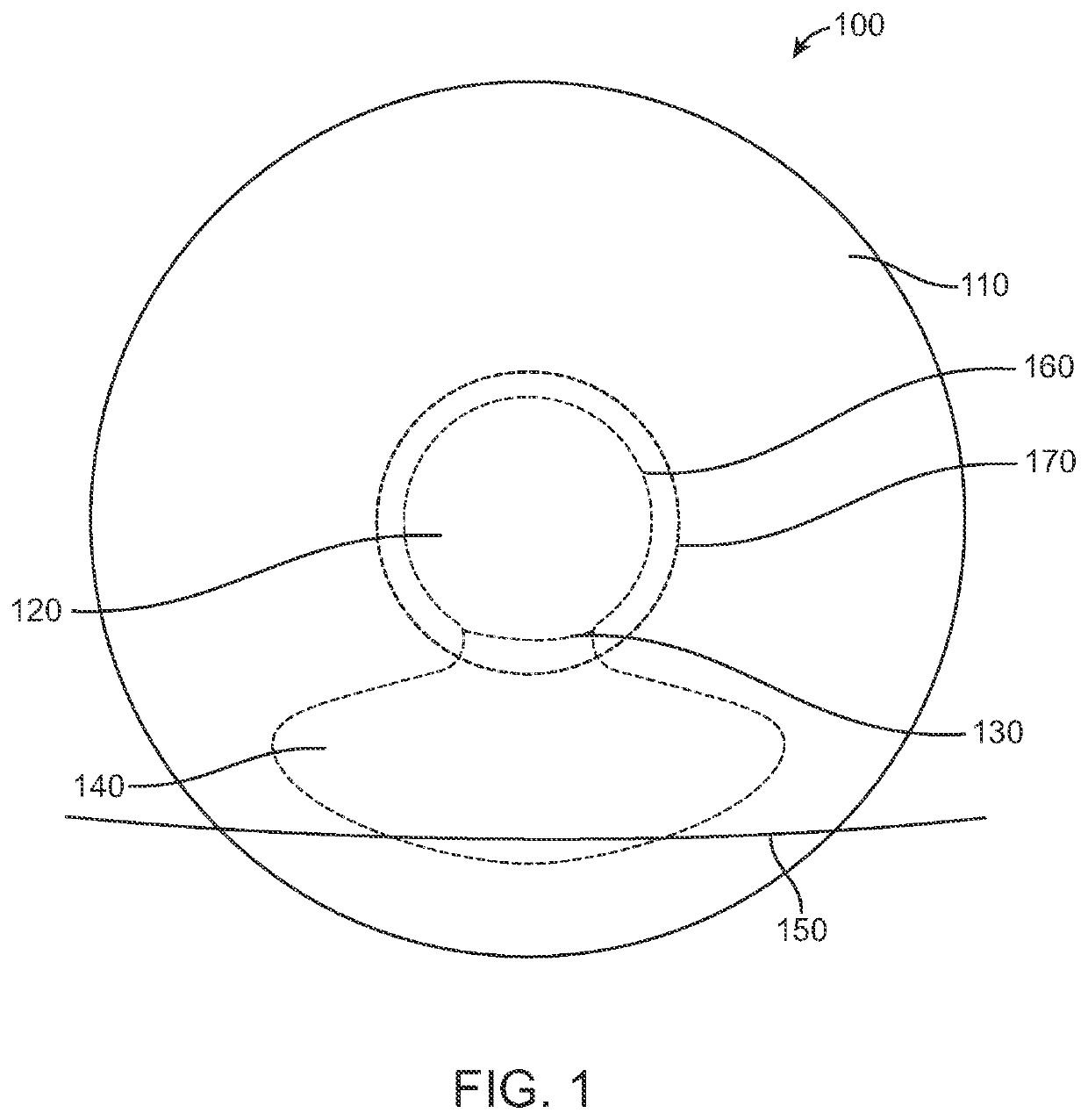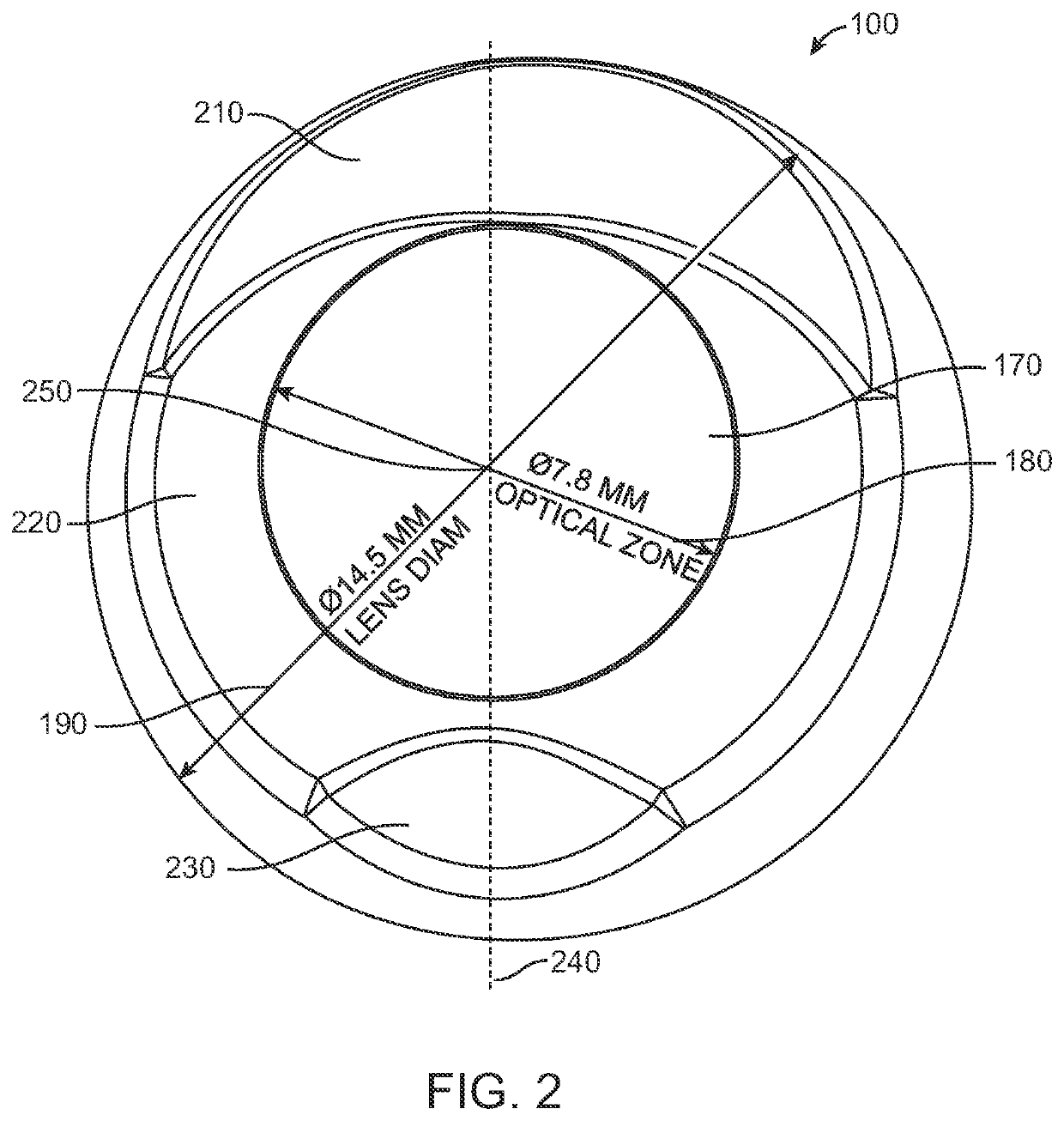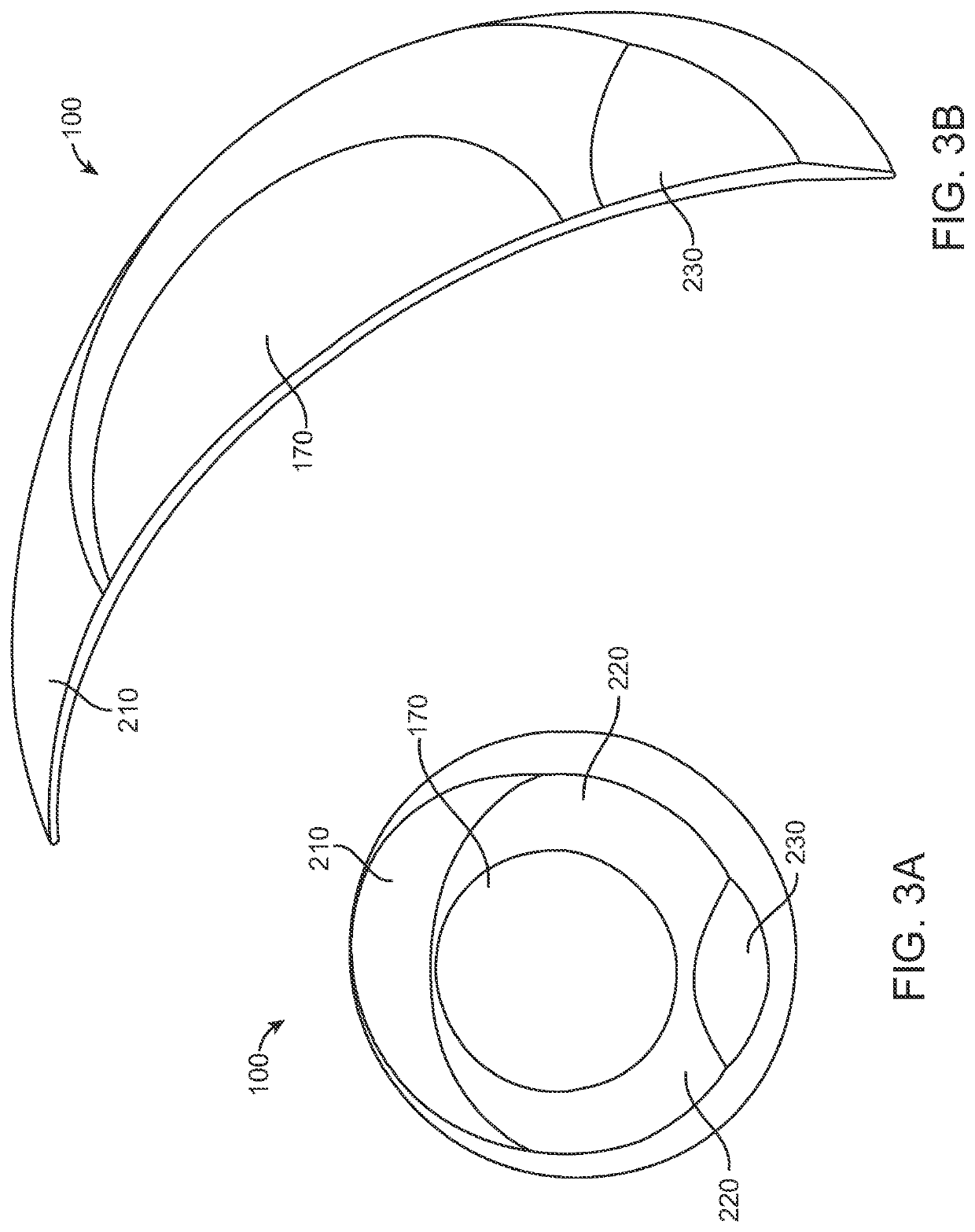Rotationally stabilized contact lens
a technology of rotating stabilizer and contact lens, which is applied in the field of rotating stabilized contact lens, can solve the problems of less than ideal alignment of contact lenses on the eye, prior approaches to stabilization being less than ideally suited for use with accommodating contact lenses, and inability to adjust the angle of contact lenses, etc., to achieve the effect of improving the stabilization of contact lenses, reducing thickness, and reducing thickness
- Summary
- Abstract
- Description
- Claims
- Application Information
AI Technical Summary
Benefits of technology
Problems solved by technology
Method used
Image
Examples
Embodiment Construction
[0042]The contact lens and related methods and apparatus are well suited for many types of contact lenses, such as accommodating soft contact lenses. Although specific reference is made to stabilized accommodating contact lenses with fluidic coupling, the stabilized contact lenses disclosed herein can be used with many types of contact lenses, rigid and soft contact lenses and accommodating contact lenses such as electronic contact lenses, accommodating electronic contact lenses, other types of accommodating contact lenses response to engagement with a lower eyelid. The fluidic contact lens comprises an inner optical chamber configured to increase optical power and a lower chamber fluidically coupled to the optical chamber to increase optical power when the lower chamber engages the lower eyelid. The inner optical chamber and the lower chamber can be coupled to each other with a channel such as a microchannel.
[0043]As used herein the term “lower” refers to inferior on the subject wh...
PUM
| Property | Measurement | Unit |
|---|---|---|
| thickness | aaaaa | aaaaa |
| thickness | aaaaa | aaaaa |
| thickness | aaaaa | aaaaa |
Abstract
Description
Claims
Application Information
 Login to View More
Login to View More - R&D
- Intellectual Property
- Life Sciences
- Materials
- Tech Scout
- Unparalleled Data Quality
- Higher Quality Content
- 60% Fewer Hallucinations
Browse by: Latest US Patents, China's latest patents, Technical Efficacy Thesaurus, Application Domain, Technology Topic, Popular Technical Reports.
© 2025 PatSnap. All rights reserved.Legal|Privacy policy|Modern Slavery Act Transparency Statement|Sitemap|About US| Contact US: help@patsnap.com



